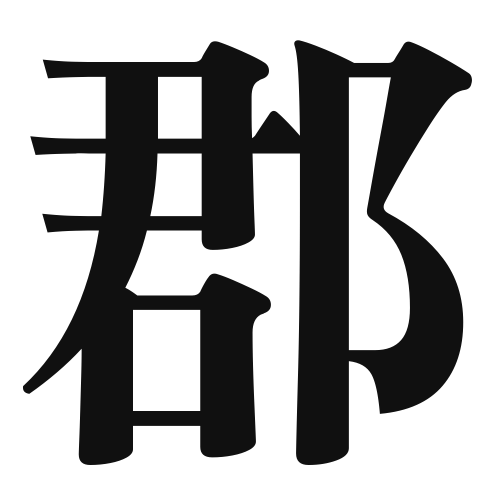1. Overview of Meaning
The kanji “郡” (gun) refers to a district or a county. It is used to denote a specific administrative region within a larger area, often used in the context of governance and geography.
2. Origin and Radicals
The kanji “郡” is a compound character (会意文字) that combines elements to convey its meaning. It consists of the radical “阝” (which represents a hill or mound) and the character “君” (which means “lord” or “ruler”). This combination suggests a region governed by a lord.
The radical “阝” is commonly associated with geographical features, indicating that “郡” relates to a specific area or district.
3. Examples of Usage
Common words and phrases that include “郡” are:
- 郡部 (gunbu) – district area
- 郡市 (gunshi) – county city
Example sentence in daily conversation:
「私の住んでいる郡はとても美しいです。」(Watashi no sunde iru gun wa totemo utsukushii desu.) – “The district I live in is very beautiful.”
4. Synonyms and Antonyms
Similar kanji with related meanings include:
- 区 (ku) – ward or district, which is smaller than a “郡”.
- 県 (ken) – prefecture, which is a larger administrative division than a “郡”.
Antonyms include:
- 孤立 (koritsu) – isolation, which conveys the opposite idea of being part of a community or district.
5. Cultural and Historical Background
The concept of “郡” is significant in Japanese culture, as it reflects the historical administrative divisions used in governance. In ancient Japan, “郡” were essential for organizing land and resources.
Proverbs and idioms related to “郡” include:
- 「郡を治める者は民を治める」(Gun o osameru mono wa tami o osameru) – “He who governs the district governs the people,” emphasizing the importance of local governance.
